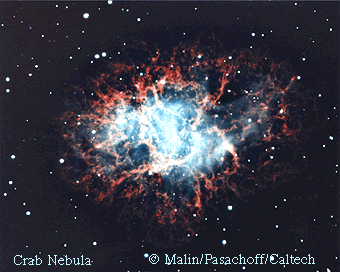Astronomy Picture of the Day
Discover the cosmos! Each day we feature a different image or photograph of our fascinating universe, along with a brief explanation written by a professional astronomer.
November 22, 1995

M1: The Exploding Crab Nebula
Credit:
Hale 5 Meter
Telescope
Copyright:
AATB,
Caltech, David Malin, Jay
Pasachoff


